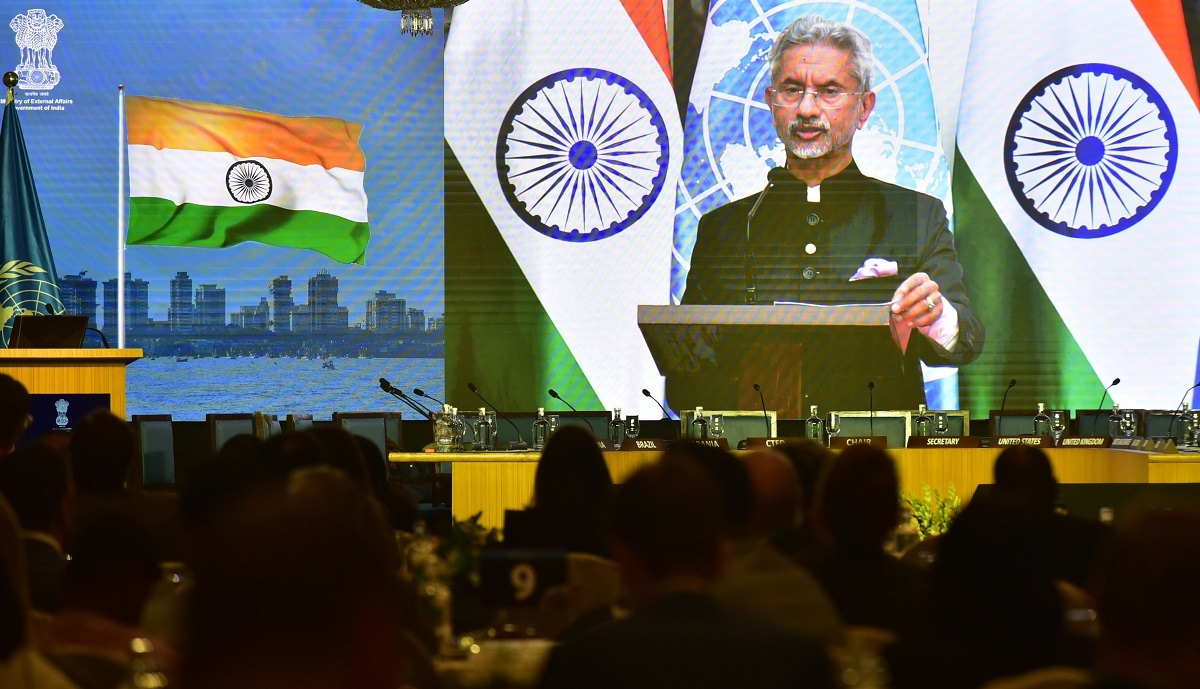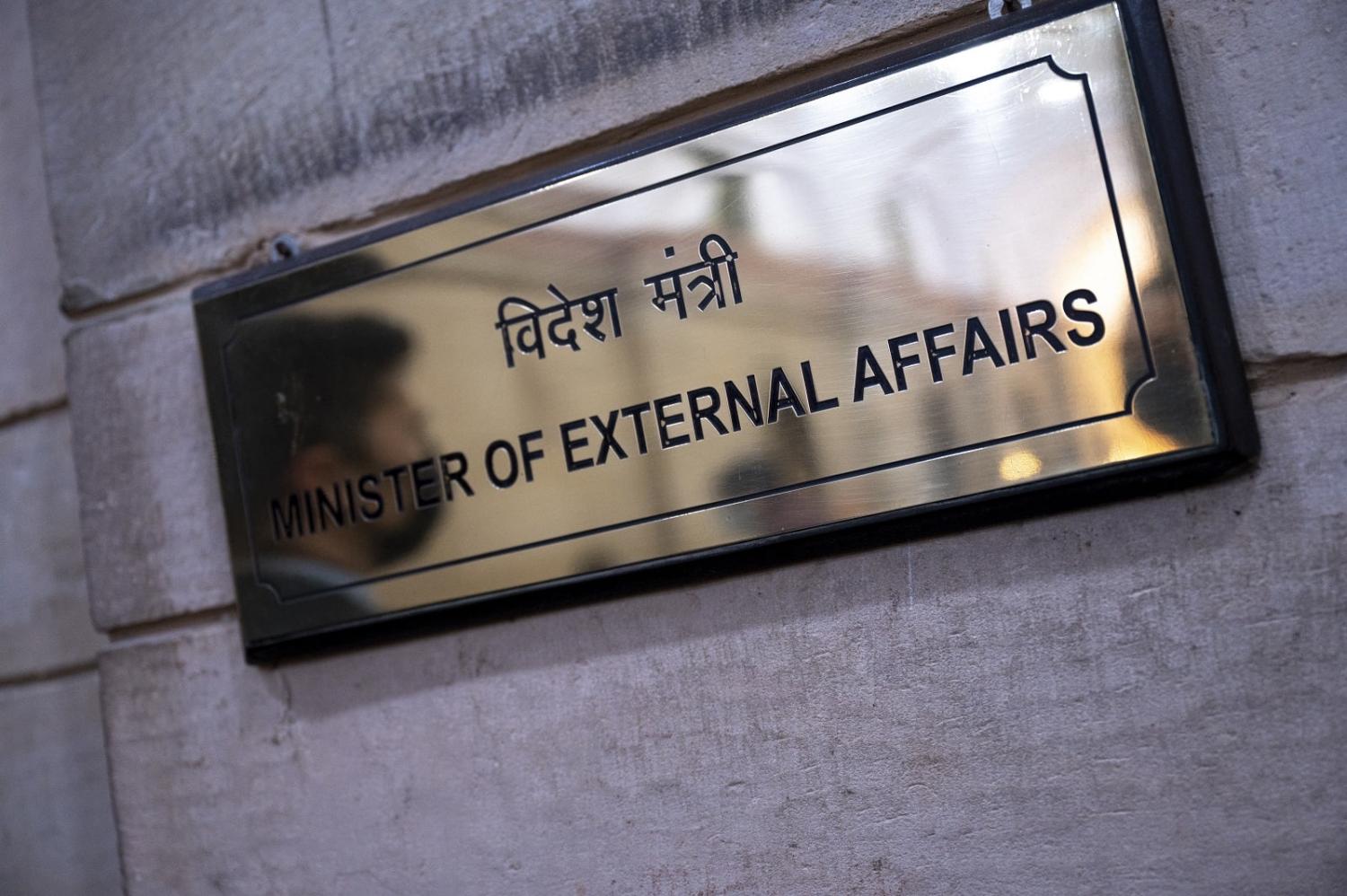The reported visit by Indian Defence Minister Rajnath Singh to Australia, scheduled for late February, is indicative of the convergence of India’s diplomatic, commercial and security policies. This has required greater coordination, including between India’s civilian leadership, its bureaucracy and its military. New Delhi has been attempting to address some of these challenges through administrative reforms, including the creation of a Chief of Defence Staff to head a new Department of Military Affairs. But a less observed trend has been the secondment of Indian military officers to the Ministry of External Affairs (MEA).
Indian diplomats and military officers working closely together isn’t new. In the 1930s, the Indian Political Service, which preceded the Indian Foreign Service, was staffed by Indian military officers, too. The Indian Military Mission in Berlin during the early 1950s was headed by a career diplomat, and an Indian Navy Commodore was part of India’s delegation to the Third United Nations Conference on the Law of the Sea (UNCLOS). In the mid-1980s to early 1990s, Indian defence attachés were trained at the Foreign Service Institute and Indian diplomats and army officers collaborated on the “Joint Working Group” boundary negotiations with China. For a time, senior foreign service officer Hardeep Singh Puri (now a cabinet minister) led the Indian Navy division within the defence ministry. Cooperation between Indian military officers and diplomats has not always been smooth though. India’s peacekeeping operations in Sri Lanka in the 1980s exposed differences.
Nonetheless, when the MEA began to have concerns about mid-level staff shortages and its obvious impact on policy implementation, it looked to the Indian military for cross-postings, especially for short-term responsibilities. Between 2007 to 2022, around 82 active-duty military officers served in the MEA. After being in single digits until 2016, the years 2017 to 2019 saw a sharp rise from nine to 30 military officers. However, it dropped to fewer than 20 by 2020, possibly due to the pandemic. The numbers picked up again from 2021 and reached 39 officers by 2022. During this period, the Indian Army was the most represented with 52 officers, followed by the Navy with 20 and the Air Force with ten.
The postings of these military officers are indicative of priorities. At least 55 per cent served in functional divisions dealing with cross-cutting issues not specific to any geography. Notable among them is the Disarmament and International Security Affairs division set up in the early 1990s to deal with nuclear non-proliferation, maritime security, outer space and other security matters. Currently, the G20 secretariat hosts the largest group of military officers.

Military officers have also served in regional divisions. Twenty-nine per cent have staffed offices focused on India’s relations with countries in the Indo-Pacific, the Gulf states, Europe and North America, which are home to many of India’s security partners. Some of the factors possibly accounting for an increase in divisional postings after 2016 include military diplomacy, the increasing frequency of humanitarian relief operations, and political-military coordination, such as various “2+2” dialogues. Another evident trend is military officers working in divisions where policy can benefit from their service-specific expertise. Naval officers regularly staff the Indian Ocean and Gulf country divisions. Similarly, Army officers are most often posted in the boundary cell and the UN political divisions, which deal with peacekeeping issues.
One upside of the growth in cross-deployments between the Indian military and the MEA could be a better appreciation in the Indian military of foreign policy, especially when their professional education is mainly focused on military tactics. The incumbent Director of Military Affairs for example addressed a United Nations open-ended working group on conventional ammunition in Geneva in August 2022. Likewise, Indian diplomats can enhance their understanding of military power, which can be useful when MEA needs to sign off on military diplomacy plans crafted by the respective services. Such efforts could, over time, contribute to combined efforts in furthering defence exports, deploying military training teams and other capacity-building initiatives with select foreign partners. Military officers also augment scarce diplomatic capacity when it comes to organising high-profile summits such as the India-ASEAN and the G20. And at least 16 per cent have provided administrative support in functions such as digital governance and estate management.
Through all these kinds of interactions, Indian diplomats and military officers can build personal networks and habits of cooperation. This is significant in an Indian context, where inter-agency coordination is relatively informal. And such cross-pollination will be necessary as India increases the tempo of staff talks, “pol-mil” consultations, military exercises and high-profile military engagements, including with the United States, Australia and other security partners.
India’s somewhat nascent defence-diplomacy fusion is not nearly as institutionalised as what takes place in the United States with the State-Defence Integration program. Nonetheless, it amplifies other visible trends in civil-military coordination. Recent examples include the Indian foreign secretary addressing the 4th Defence Attachés Conclave and a senior Indian diplomat for the first-time being part of the India–China military commanders’ talks to resolve the boundary standoff. Better harmony between defence and diplomacy will not militarise but rather support India’s foreign policy to shape a favourable balance of power and bolster deterrence. To that end, a well-staffed foreign ministry with military officers embedded within it can enable India to use its diplomatic and military instruments more creatively and judiciously.

